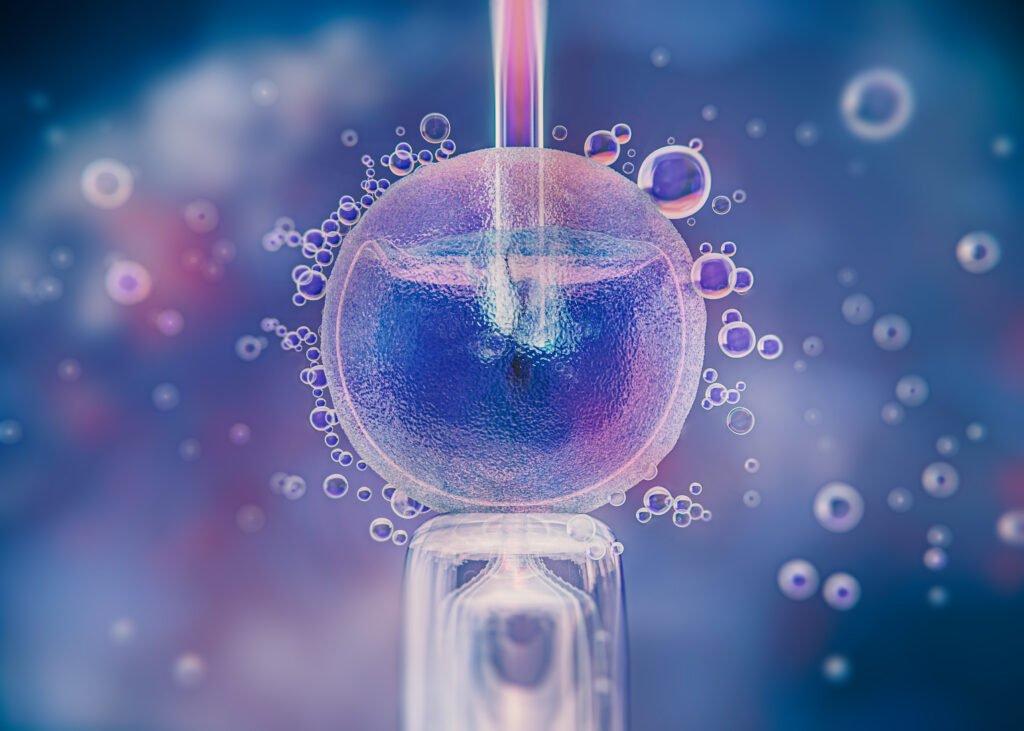Fertility Preservation: What is oocyte cryopreservation and why has it increased in popularity?
Chaimaa Riad
February 2025
What is Oocyte Cryopreservation?
Oocyte cryopreservation is also known as egg freezing. This is a procedure in which a woman’s eggs are retrieved, frozen and stored to preserve her ability to conceive later in life, while she is still of reproductive age.[1] The eggs are specifically extracted from the body before their fertilization. Once they are ready to be used, the eggs undergo a thawing process to be transferred into the uterus and become fertilized for pregnancy.[1] Oocyte cryopreservation is considered a form of preventative healthcare.[2]
The first successful pregnancy recorded via egg freezing was in 1986. [3] Oocyte cryopreservation began to combat possible infertility in women with medical conditions like cancer, in which chemotherapy and pelvic radiation could damage their reproductive organs, or autoimmune conditions such as systemic lupus erythematosus. [4] However, there has been a large increase in the number of egg freezing procedures in the last six years for more social reasons. An increasing number of women have decided to do this procedure for financial, professional, or simply personal reasons. Studies have shown that many women believed that becoming pregnant before 35 would negatively impact their careers. [5] Women have been especially inclined to do this procedure with improvements in medical technology and even the use of AI in improving the freezing and thawing process for optimal fertilization. [4]

There are multiple risks of oocyte cryopreservation. Short-term adverse effects include general symptoms such as nausea, headache, irritability, chest pain, pelvic pain, and oliguria (decreased urine output). [2] Additionally, there are increased risks that come with assisted reproductive techniques (ART), which include preterm birth. This is one of the more severe risks, which also carries the potential risk of cerebral palsy. [5] Furthermore, women who undergo oocyte cryopreservation are more likely to be older. As women age, the complications of pregnancy, such as preeclampsia, gestational diabetes, ectopic pregnancy, and the need for a cesarean section tend to increase. [5]
It is also important to consider both the emotional and financial impacts of this procedure on women. This process is invasive and often requires women to undergo multiple cycles of egg freezing.[3] These procedures can cost anywhere between $5,000-$10,000 per cycle. [4]
It is crucial for women to connect to a team of specialists who can thoroughly explain the benefits, drawbacks, and risks of the procedure. Additionally, counselors are essential to support women throughout the process. [2] In essence, egg freezing allows women the opportunity to have more flexibility in their family planning. There are ongoing advancements in reproductive medicine that will allow women to preserve fertility based on their own timeline. The most crucial factors to consider when deciding to freeze eggs would be the financial and emotional costs, as well as the possible risks, both long term and short term.
References:
[1] Egg freezing. UCLA Health. (n.d.). https://www.uclahealth.org/medical-services/obgyn/fertility/egg-freezing
[2] Katsani, D., Paraschou, N., Panagouli, E., Tsarna, E., Sergentanis, T. N., Vlahos, N., & Tsitsika, A. (2024, January 10). Social Egg freezing-a trend or modern reality?. Journal of clinical medicine. https://pmc.ncbi.nlm.nih.gov/articles/PMC10816669/
[3] Walker, Z., Lanes, A., & Ginsburg, E. (2022, January 7). Oocyte cryopreservation review: Outcomes of medical oocyte cryopreservation and planned oocyte cryopreservation – reproductive biology and endocrinology. BioMed Central. https://rbej.biomedcentral.com/articles/10.1186/s12958-021-00884-0
[4] Dimitriadis, I., (2024, February 20). Freezing Eggs: Advances in Fertility Treatment. Mass General Brigham. https://www.massgeneralbrigham.org/en/about/newsroom/articles/what-is-cryopreservation#:~:text=In%201984%2C%20the%20first%20baby,longer%20considered%20an%20experimental%20procedure.
[5] Varlas, V. N., Bors, R. G., Albu, D., Penes, O. N., Nasui, B. A., Mehedintu, C., & Pop, A. L. (2021, July 30). Social freezing: Pressing pause on fertility. International journal of environmental research and public health. https://pmc.ncbi.nlm.nih.gov/articles/PMC8345795/





